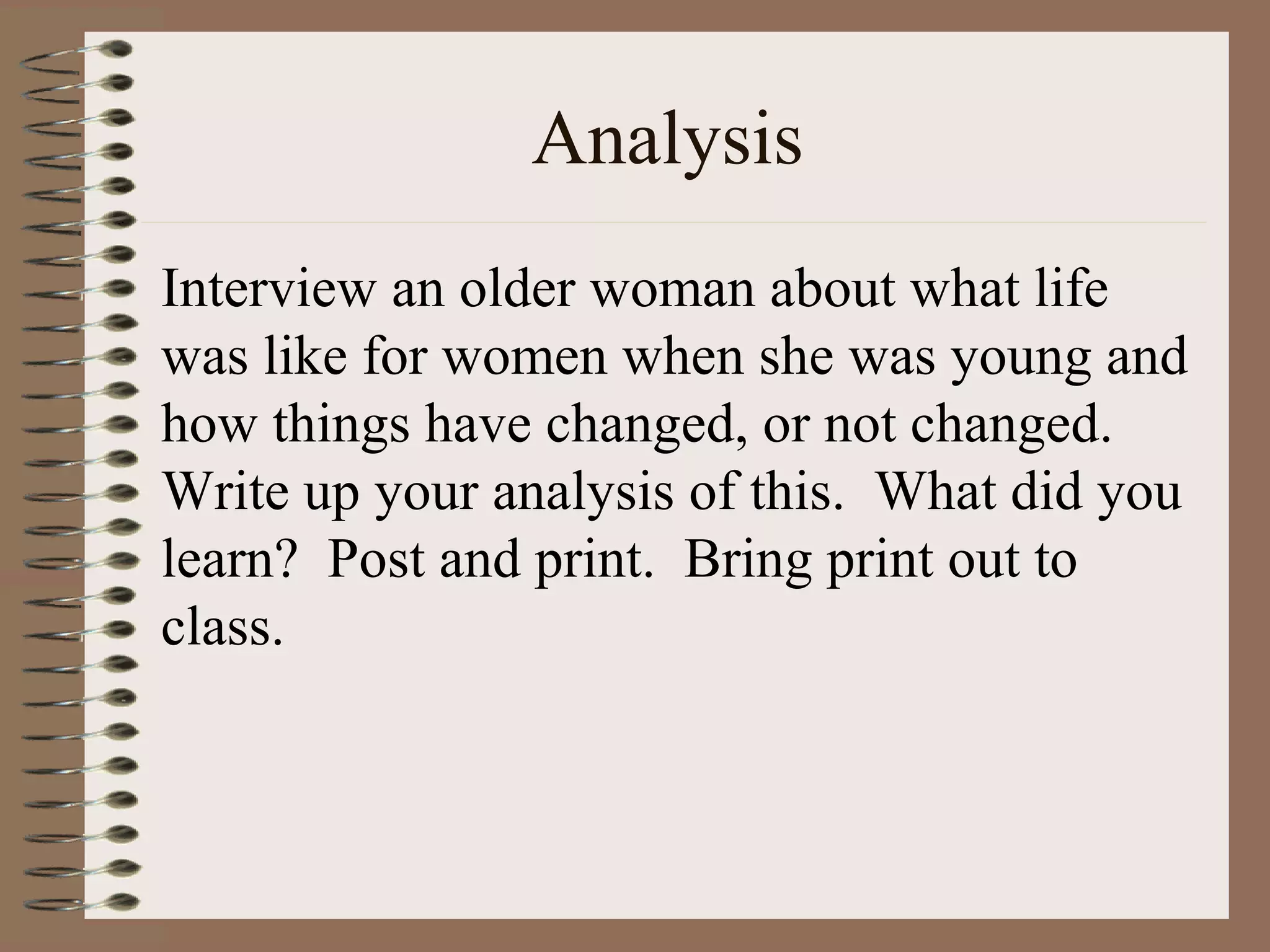The document outlines a personal narrative connecting the author's lineage to women's and gender studies, emphasizing the evolution of feminism through various waves and its importance in society. It details the definitions of key terms, such as sex, gender, equality, patriarchy, and misogyny, and highlights the significance of women's studies as a discipline that includes women's perspectives. The course aims to analyze cultural ideologies and foster understanding of gender issues while encouraging discussions and personal reflections.


















![Gender
• Gender is the social significance of the
difference in sex. Gender, according to Professor
Lois Self, the Chair of the Women’s Studies
Department at Northern Illinois University, “is
the difference the [sex] difference makes.”
Gender is a social concept. Masculinity and
femininity are the usual descriptors of gender,
and they refer to a complex set of characteristics
and behaviors that are prescribed for members of
a particular sex category; it is an achieved social
status.](https://image.slidesharecdn.com/introductiontogenderlecture-130821124417-phpapp02/75/Introduction-to-Women-s-and-Gender-Studies-Lecture-19-2048.jpg)








